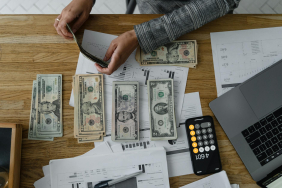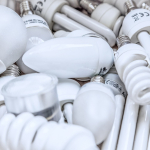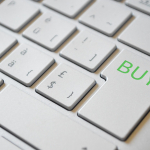In today’s fast-paced financial landscape, managing your money effectively requires more than just traditional methods. While the envelope method has stood the test of time as a budgeting classic, the rise of smart budgeting apps and convenient online banking options has transformed how we approach our finances in 2025. By embracing this digital budgeting revolution, you can create a flexible and trackable budgeting plan that suits your lifestyle. This guide will walk you through the evolution of the envelope method, introduce you to top smart budgeting apps, and help you develop a personalized digital budget that meets your unique financial goals.
Understanding the Envelope Method and Its Digital Evolution
The envelope method has long been a popular budgeting strategy, helping individuals allocate their money wisely by using physical envelopes to categorize spending. Each envelope represents a specific expense, such as groceries, entertainment, or rent, allowing you to visualize and control your financial flow. However, as technology has evolved, so too has this budgeting strategy, enabling you to manage your finances seamlessly through smart budgeting apps.
In 2025, modern app innovations have transformed the traditional envelope system into a flexible digital format. With these advancements, you can create virtual envelopes directly on your smartphone or computer, allowing for a more mobile approach to budgeting. Just like their physical counterparts, these digital equivalents categorize your funds but come with enhanced features like real-time tracking, automated reminders, and insightful analytics.
Here’s how to adapt the envelope method in the digital age:
| Feature | Traditional Envelope Method | Digital Evolution |
|---|---|---|
| Physical Envelopes | Requires cash management | Virtual envelopes in budgeting apps |
| Spending Categories | Fixed categories with physically separated cash | Customizable digital categories with flexibility |
| Tracking | Manual tracking of cash spent | Automatic tracking of transactions |
| Adjustments | Difficult without physically re-budgets | Easily update categories and amounts in-app |
By using smart budgeting apps, you gain insights into your spending habits and identify areas where you can cut back. Moreover, the digital platform allows you to easily adjust your budget based on your changing needs and goals without the hassle of cash handling. Thus, the digital evolution of the envelope method empowers you to achieve financial control at your fingertips, making it a savvy solution for tech-savvy savers aiming for efficient budgeting in the digital age.

Top Smart Budgeting Apps to Streamline Your Finances
In the digital age, managing your finances has never been easier, thanks to the rise of smart budgeting apps. These tools not only help you organize your expenses but also offer unique features to enhance your financial literacy and provide insights into your spending habits. Here are some of the top recommended apps that can revolutionize your budgeting experience:
| App Name | Key Features | Ideal For |
|---|---|---|
| EveryDollar | Zero-based budgeting, user-friendly interface | Users wanting structured financial goals |
| YNAB (You Need A Budget) | Goal-tracking, multiple account integration | Individuals serious about debt reduction |
| PocketGuard | Expense tracking, automatic categorization | Those looking for simplified budgeting |
| Mint | Comprehensive financial overview, bill reminders | Users wanting a 360-degree view of finances |
| Spendee | Shared wallets, budget categories | Families or friends managing shared expenses |
If you’re looking to adopt a more digital approach akin to the envelope method 2025, these apps provide the capillary control over your finances that traditional techniques may lack. They enable you to create virtual envelopes for various spending categories, ensuring that you stick to your budget without the hassle of managing cash physically. As a tech-savvy saver, using these modern tools will help you track your financial journeys effortlessly.
Utilizing features such as savings goals and debt tracking, you can also integrate these apps with your bank accounts for real-time updates and alerts, making it easier to adapt your budgets on the fly. This level of adaptability is crucial for someone who might face variable expenses month-to-month.
Moreover, many of these apps offer educational resources about personal finance, helping you become not just a user but also a more informed participant in your financial journey. Whether you’re aiming for savings milestones or simply trying to overcome financial anxiety, employing smart budgeting apps can streamline your finances like never before.
How to Create a Flexible Digital Budgeting Plan
Creating a flexible digital budgeting plan is essential for managing your finances effectively in today’s fast-paced world. By combining the classic envelope method 2025 with cutting-edge technology, you can adapt your budgeting strategy to fit seamlessly into your lifestyle. Here’s how to get started:
1. Define Your Financial Goals
Begin by outlining your short-term and long-term financial objectives. Are you saving for a vacation, paying off debt, or building an emergency fund? Clearly defined goals provide direction for your budgeting efforts.
2. Choose Your Apps and Tools
Select suitable smart budgeting apps to help manage your finances. Look for features like expense tracking, categorization, and savings goal setup. Popular choices include apps such as EveryDollar, Mint, and YNAB (You Need a Budget).
3. Set Up Categories
Instead of physical envelopes, create digital categories within your chosen app. Assign budget amounts to each category based on your financial goals and spending habits. These may include groceries, entertainment, savings, and debt repayment.
4. Allocate Funds
Distribute your income across your digital envelopes. Make sure you account for both fixed and variable expenses, providing enough flexibility to adjust budgets as circumstances change.
5. Monitor and Adjust Regularly
Utilize your app’s tracking features to monitor your spending in real-time. Review your budget weekly or monthly to identify trends and adjust your categories as necessary. If you overspend in one area, consider reallocation from another category to maintain balance.
6. Incorporate Savings Challenges
Consider integrating savings challenges, similar to the original envelope system, as a way to boost your savings. Apps often have built-in features for this, allowing you to gamify your savings.
7. Track Your Progress
Make it a habit to review your financial progress regularly. Use the insights provided by your budgeting apps to celebrate milestones and reassess your goals when necessary.
By following these steps, you will create a dynamic and adaptable digital budgeting plan that incorporates envelope method 2025 principles while embracing modern technology for seamless money management. This powerful combination allows you to stay on track, meet your financial goals, and decrease financial stress with ease.
Frequently Asked Questions
What are some effective digital budgeting strategies?
In the digital age, effective budgeting strategies go beyond traditional methods. Utilize budgeting apps that offer features like automatic expense tracking, customizable categories, and goal setting, such as EveryDollar, Mint, or YNAB. Additionally, using a zero-based budgeting method can help you allocate every dollar earned toward specific expenses or savings goals. Finally, consider integrating digital tools that provide real-time insights into your spending patterns, helping you make informed decisions and adjustments as needed.
How can I incorporate savings goals into my digital budgeting?
Incorporating savings goals into your digital budgeting can be easily achieved through budgeting apps that allow goal tracking. When setting up your budget, identify specific savings targets, like an emergency fund, vacation, or large purchases. Allocate a portion of your income directly towards these goals each month. Many budgeting tools feature visual progress indicators, allowing you to see how close you are to achieving those targets, making saving feel more tangible and providing motivation to stick to your budget.
What tools can help me manage my budget more effectively?
To manage your budget effectively in the digital age, consider using apps like Mint, YNAB (You Need a Budget), and PocketGuard. These tools offer various features including linking bank accounts for automatic transaction imports, expense tracking, and monthly spending limits. Additionally, many apps provide insights into your financial habits and customizable reports, helping you to visualize your spending and make necessary adjustments quickly. Look for features like reminders for bill payments or notifications for overspending in specific categories.
Are there any downsides to digital budgeting?
While digital budgeting offers many advantages, there can be downsides. One concern is relying too heavily on technology, which may lead to overlooking personal discipline when managing finances. Additionally, some budgeting apps may come with fees for premium features, which can be a downside for budget-conscious users. Privacy and security are also critical considerations, as linking your financial accounts to apps could expose sensitive information if not handled properly. Always choose apps with robust security measures and read reviews to ensure reliability.














Comments are closed.